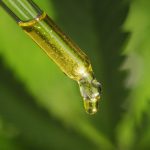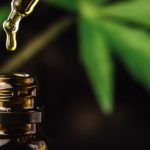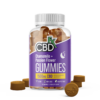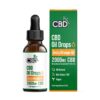
Medically reviewed by
Dr. John Rackham
Written by Michael Wright
Updated on November 3rd, 2021
Everyone knows those green five-fingered leaves. Whether it’s on a dispensary billboard or slapped over a peace sign on a T-shirt, the shape has become the universally recognised sign of marijuana. But that doesn’t quite tell the whole story. If those leaves mean “Mary Jane,” then what is cannabis? For that matter, what is hemp? Furthermore, what are cannabis sativa, cannabis indica, and cannabis ruderalis? You’d think we’d know all about those five familiar leaves by now, but it can still be confusing.
And that confusion can be an issue, particularly if you’re shopping for CBD — be it CBD gummies, CBD oil tinctures, CBD edibles, or some other CBD product. Because none of these CBD goodies has anything to do with marijuana.
So, today we’re going to break down just what each of these terms refer to (that’s refer with two e’s), and help you to better know your green.
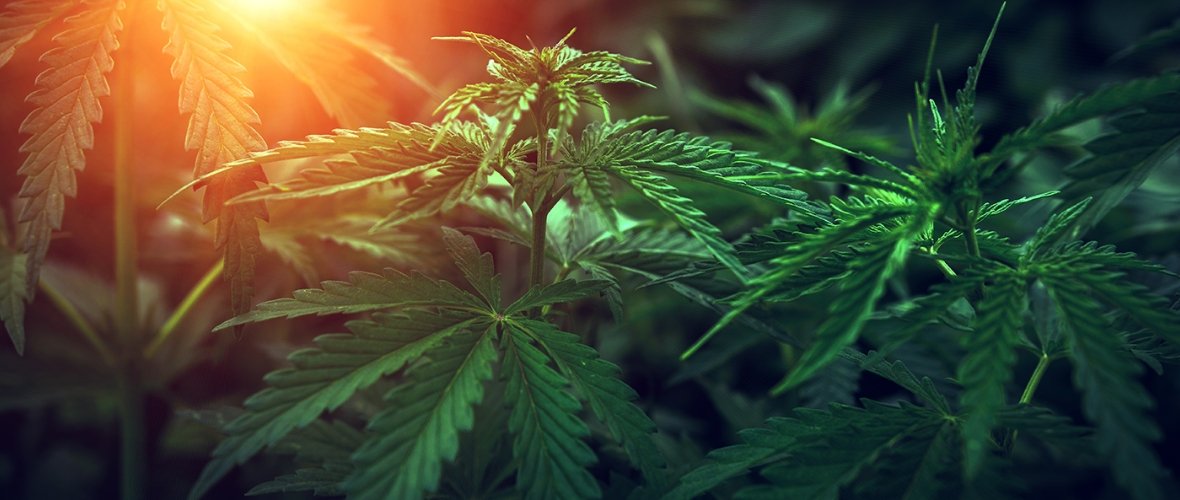
CBD 101: What Is Cannabis?
Cannabis is a tall, flowering plant from the Cannabaceae family, which includes about 170 different species. The cannabis genus originated in Central Asia, around Mongolia and parts of Siberia. But due to its popularity among several ancient cultures, cannabis spread all over the world, finding prevalence in such diverse cultures as those of ancient India and the Vikings.
Cannabis is a hardy plant that can survive in a variety of climates. Cannabis is what is known as a bioaccumulator, meaning that the plant absorbs nutrients and anything else it can pull from its neighbouring soil, making it incredibly tenacious. (There’s a reason people call it “weed.”) Because of this tenacity and the plant’s incredibly wide range of uses, cannabis has been an important part of human history for 10,000 years.
Cannabis Sativa vs. Cannabis Indica vs. Cannabis Ruderalis
The genus cannabis contains three different plant species: cannabis sativa, cannabis indica, and cannabis ruderalis.
Cannabis ruderalis is less common than its sister species. It produces less THC, which makes it a bit less appealing for recreational purposes. Cannabis ruderalis is smaller and bushier than the other cannabis species as well, making it less useful for hemp production, where tall, thick stalks are an important component. Still, due to its particular hardiness and early flowering characteristics, cannabis ruderalis is often cross-bred with other species.
The cannabis sativa plant and cannabis indica are the much more familiar species of cannabis. They also have differences in leaf shape, bud size and other physical and chemical characteristics — and they can both be more potent in terms of THC content than cannabis ruderalis.
In general terms, indica is more potent than sativa — at least in their unaltered forms. However, so many different cannabis strains have been engineered, including countless hybrid strains combining sativa and indica, that the lines throughout this family have become a bit blurred. And there are some who argue that all three should just be considered part of a single species: cannabis sativa. At this point, it is important to understand that the categorisation of “indica” or “sativa” is more indicative of the plant’s leaf morphology, height, and branching, and not necessarily its effect on the body.
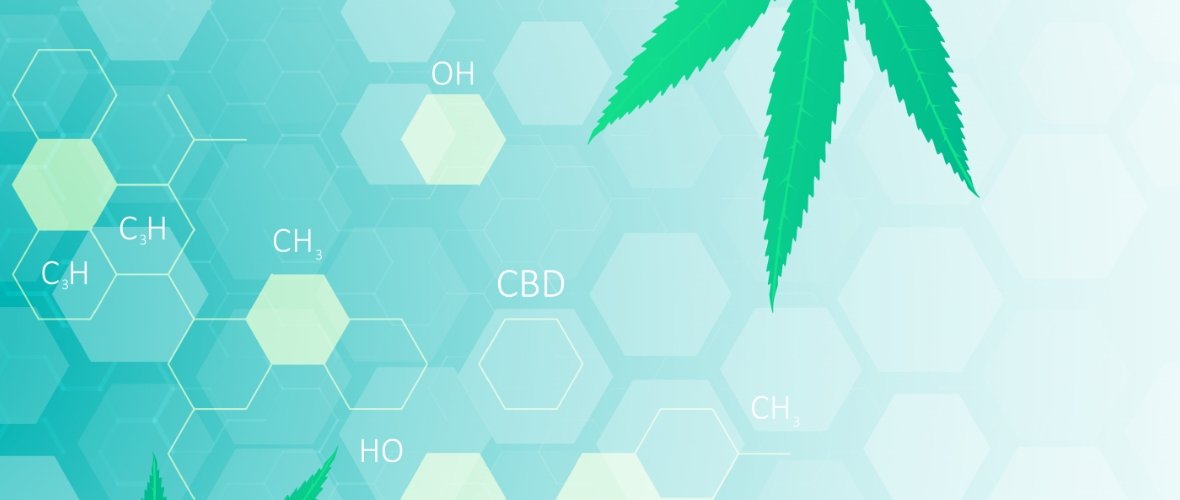
Cannabinoids: CBD vs. THC
Since we’re bandying about terms, like THC and CBD, it’s probably a good time to dig into the various compounds found in cannabis plants. Because that’s where the real potential for the genus cannabis lies. A major group of chemical compounds found in the cannabis plant are called cannabinoids. There are over 100 such plant compounds found in cannabis, including the major cannabinoids, THC and CBD, and minor cannabinoids, including CBG, CBN and CBC. Cannabis also produces terpenes and flavonoids, both of which also impart healthful effects.
CBD and the Endocannabinoid System
These cannabinoids can have a profound effect when they interact with the body’s endocannabinoid system. All vertebrates, including humans, have an endocannabinoid system. This system interacts with various other systems in the body, most notably the central and peripheral nervous systems, helping to regulate, support and bolster them.
The body actually produces its own cannabinoids, called endocannabinoids, which bind to receptors in the nervous system. The first receptor is called the CB1 receptor. This works mainly with the central nervous system and helps to regulate such essential functions as mood, memory, pain, appetite, motor control, and other vital areas. The CB2 receptor binds primarily with the peripheral nervous system, regulating pain and inflammation. The cannabinoids produced by the body play a crucial role in the regulation of these important functions.
Cannabinoids produced by the cannabis plant (also known as phytocannabinoids) largely mimic the body’s own endocannabinoids, stimulating these receptors and supporting various functions throughout the body. This is particularly important for people whose bodies don’t produce enough endocannabinoids. A high-quality CBD supplement can promote homeostasis or balance in the body which can, in turn, help people get their systems working to their fullest potential, boosting their wellness in multiple areas.
What Is CBD?
Cannabidiol, or CBD, is a major cannabinoid that helps the body’s endocannabinoid system do what it already does — support the body’s internal systems — only better. As a result, hemp-derived CBD has been used for centuries to help the mind and body with everything from sleep to pain relief. Cannabidiol is considered by many to be the ultimate wellness supplement. CBD is non-psychoactive, meaning this product of the hemp plant produces little or no side effects and no intoxicating effects. That is to say, CBD does not get you high.
Hemp CBD vs. Marijuana CBD
CBD is prevalent in both marijuana and hemp. When you purchase CBD products, such as CBD oil tinctures or CBD capsules, you are purchasing hemp CBD. This is CBD derived from the buds (flower), leaves and stalks of the hemp plant. Hemp-derived CBD contains less than 0.3% THC and is non-psychoactive. Hemp seed oil is also extracted from the hemp plant, but its effects are largely beneficial to the skin, making it a common component of beauty and skin care products.
Marijuana CBD does exist. That is to say, there is CBD in marijuana plants. But this CBD is not legal to sell in the UK.
What Is THC?
THC, or tetrahydrocannabinol, is the cannabinoid best known for its psychoactive effects. When the cannabinoid THC binds to the receptors in the endocannabinoid system, it gives the body a relaxed, euphoric feeling. This is often referred to as a “high.”
When you purchase CBD derived from the hemp plant, you get all the benefits of CBD, without the “high” of THC.
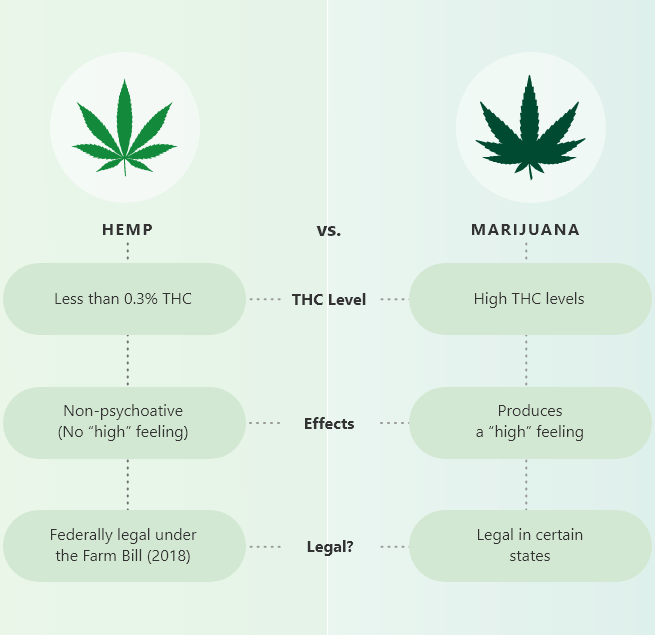
This, then, brings up the final distinction in our discussion of cannabis vs. hemp.
Hemp vs. Marijuana
The curious thing about the scientific discussion of cannabis is that it doesn’t really explain what hemp is. Or marijuana, for that matter. That’s because these names aren’t part of the genus-species nomenclature.
Hemp is a general term used to describe cannabis plants, primarily cannabis sativa, that contain less than 0.3% THC. Marijuana is a term used to describe plants with more THC, ranging upwards of 30% THC. In simpler terms, marijuana gets you “high,” and hemp does not.
As we mentioned earlier, hemp has been used for 10,000 years in the production of rope, paper, cloth, building materials, and several other uses. Hemp oil has been used for medicinal purposes as far back as ancient China. In a sense, hemp has been entwined with much of human history.
It wasn’t until the early 20th century that marijuana smoking became a political issue in the United States and other countries, including the UK. This was due, in large part, to racial discrimination against immigrants fleeing from the Mexican Revolution. Subsequently, marijuana was weaponised politically against other minorities, as well. The criminalisation of marijuana provided an opportunity for industrialists, whose products were being undercut by inexpensive and plentiful industrial hemp, to get this competitive product off the market. And so, when the Marijuana Tax Act of 1937 criminalised marijuana, it also conveniently lumped hemp in its high-THC relative. It was around this time (1928, to be exact) that cannabis was criminalised in the UK, as well.
And so, all cannabis — both hemp and marijuana — was restricted in the UK and US for decades. One result of this was a massive slowdown in research into the wellness benefits of the hemp plant and CBD, in particular. Fortunately, in recent years, hemp has been legalised in the UK (with certain restrictions), and even marijuana has been legalised in parts of the United States. For those interested in the wellness potential of cannabis, this is welcome news, because it means more research and, hopefully, more approvals by the UK government as that research progresses toward medical usage.
Final Thoughts on Cannabis and Hemp-Derived CBD Oil
Cannabis is a remarkable plant, whose capabilities we’re just beginning to fully understand. Its low-THC form, hemp, has been an essential part of human agriculture since the dawn of civilisation. And its most prevalent chemical compound, CBD, has seemingly limitless potential in the area of health and wellness. We hope you’ve enjoyed this little journey through the world of cannabis and hemp. And we encourage you to check out our wellness-boosting CBD products, so that you can enjoy the benefits of this wonderful plant.
Thinking of exploring hemp-derived CBD? Try our CBD Oil Wellness Tincture!
- Warf, Barney. “High Points: An Historical Geography of Cannabis.” Geographical Review, 104:4, 414-438, DOI: 10.1111/j.1931-0846.2014.12038.x. 2014.
- Raypole, Crystal. “A Simple Guide to the Endocannabinoid System.” Healthline.com, https://www.healthline.com/health/endocannabinoid-system. 17 May 2019.
- Dresden, Danielle. “What Is the Difference Between Hemp CBD and Cannabis CBD?” Medical News Today, https://www.medicalnewstoday.com/articles/hemp-cbd-vs-cannabis-cbd. 23 July 2020.
- Murray, Dana. “CBD Oil vs. Hempseed Oil: How to Know What You’re Paying For.” Healthline.com, https://www.healthline.com/health/hemp-vs-cbd-oil#Why-this-matters-in-the-beauty-world. 3 April 2020.
- Cadena, Aaron. “Hemp vs Marijuana: The Difference Explained.” CBD Origin, https://cbdorigin.com/hemp-vs-marijuana/. 5 January 2021.
- Blaszczak-Boxe, Agata. “Marijuana’s History: How One Plant Spread Through the World.” Live Science, https://www.livescience.com/48337-marijuana-history-how-cannabis-travelled-world.html. 17 October 2014.


